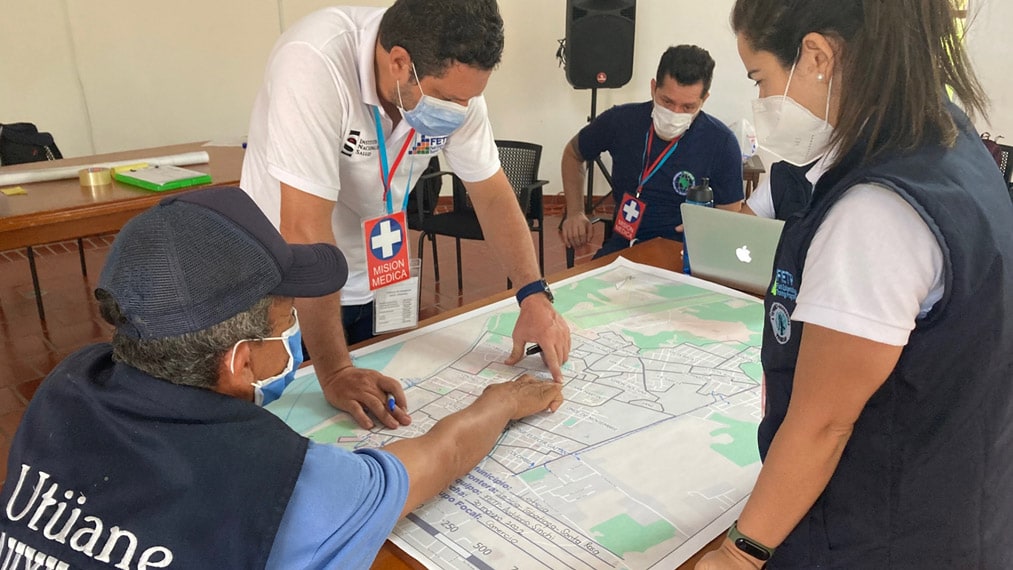Key points
- Health threats can spread to new locations when people, animals, and goods move from one place to another.
- Globalization and the increased ease of travel, both short- and long-distance, create opportunities for the introduction and spread of diseases into new locations.
- Prevention of cross-border transmission of health threats requires specific strategies and approaches. These strategies and approaches form the foundation for the field of "border health."

Overview
Border health focuses on populations moving across borders within and between countries, and the communities they are in before, during, and after travel. It also includes closely connected communities on both sides of an international border. The aim of border health is to limit the geographic spread of health threats.
Border health strategies concentrate on three main areas:
- Detecting and responding to ill travelers at points of entry (POE)
- Identifying and addressing health risks associated with movement of people, animals, and cargo across border
- Strengthening public health information sharing between neighboring countries, across a region, and globally. Timely and efficient public health information sharing enables more effective responses to health threats that may cross borders.
Strong border health systems require:
- Up-to-date plans and procedures,
- Well-trained and equipped staff, and
- Laws, regulations, and policies to implement public health measures affecting the movement of people, animals or goods.
What CDC is doing

Recognizing that a health threat anywhere is a health threat everywhere, including to the United States, CDC helps other countries to strengthen their border health systems. For example, CDC border health experts provide assistance with:
- Developing, training on, and exercising POE public health emergency response plans and procedures.
- Collecting and analyzing data to understand population movement and identify any associated health risks, and
- Developing formal public health agreements and procedures between neighboring countries to share information.
These efforts require developing strong partnerships with foreign governments, agencies, and health organizations. They also require flexibility to adapt approaches based on a country's available resources or their specific context.
CDC experts are at the forefront of this developing field. They work together with other experts in related specialties to better understand the science around how population movement affects the spread of diseases and the most effective strategies to combat that spread while also limiting disruption of travel and trade.
